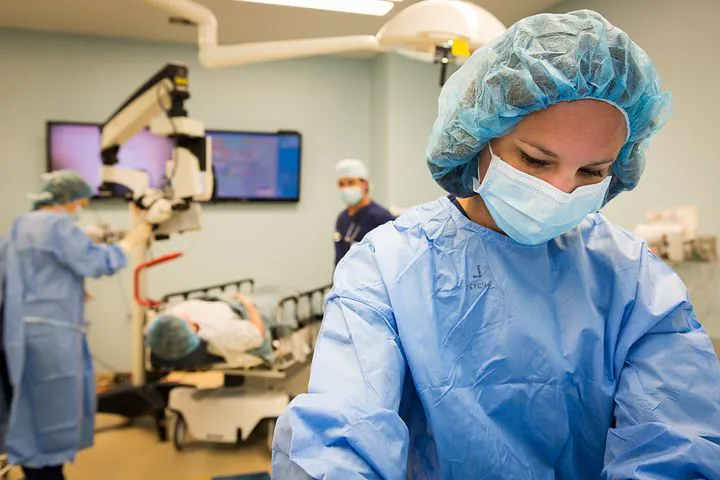Robotics
Researchers Improve Robotic Arm Used in Surgery

Robotic surgery is continuing to become more advanced and precise, especially with recent developments from scientists at Tokyo Institute of Technology. They have created a new type of controller for the robotic arm that is used in surgery. The controller aims to make the job of the surgeon easier while providing excellent precision, and it does this by combining the two major types of gripping that are used in commercially available robotic systems.
The past ten years have seen major advancements within robot-assisted surgery, and the technology is present in nearly all subspecialties. The robot systems that are used in robot-assisted surgery often include a controller device that is manipulated by the surgeon to control a robotic arm. The dexterity and precision of surgeons are improved through these systems. They scale the hand motions into smaller movements and can filter out hand tremors. Common surgical complications such as surgical site infection are reduced by the systems as well.
Robot-assisted surgery does have disadvantages, and certain problems arise for those individuals who perform the surgery. Often times, robotic surgeons suffer from physical discomfort during procedures and finger fatigue sets in. These problems are due to the way in which the controller is gripped. The two major types of grips that are often used to control surgical robots are the “pinch grip” and “power grip.” The pinch grip, which has been used in conventional surgeries for centuries, is when the thumb, middle, and index fingers are used to complete high-precision movements. The power grip is when a handle is grabbed with the entire hand, and it is often used for large movements.
The pinch grip often causes fatigue due to the tension it puts on certain hand and finger muscles, and the power grip is less precise. Because of this, neither one is the perfect option.
The newly published study in The International Journal of Medical Robotics and Computer Assisted Surgery, put forward by Mr. Solmon Jeong and Dr. Kotaro Tadano from Tokyo Institute of Technology (Tokyo Tech), highlights a new solution.
The researchers developed a new controller that combines those two different types of gripping. According to Dr. Tadano, “In robotic surgery, the limitations of the two conventional gripping methods are strongly related to the advantages and disadvantages of each gripping type. Thus, we wanted to investigate whether a combined gripping method can improve the manipulation performance during robotic surgery, as this can leverage the advantages of both gripping types while compensating for their disadvantages.”
The researchers received promising results from the proof-of-concept experiment. They proceeded to design a robotic surgery system with a modular controller capable of being adjusted to three different types of grips: pinch, power, or combined gripping. The results showed that the combined gripping method performed better in many ways, including the number of failures, the time required, and overall length of the movements performed to reach the targets. The combined gripping method was also easier and more comfortable to use, according to many involved in the experiment.
“The manipulating method of master controllers for robotic surgery has a significant influence in terms of intuitiveness, comfort, precision, and stability. In addition to enabling precise operation, a comfortable manipulating method could potentially benefit both the patient and the surgeon,” said Dr. Tadano.
The new developments will be critical in advancing robotic surgery, and they will further close the gap between human and robot within the industry.














